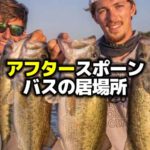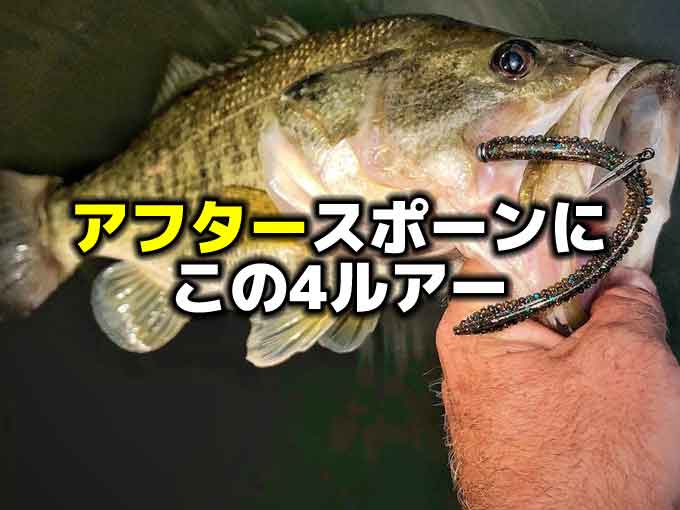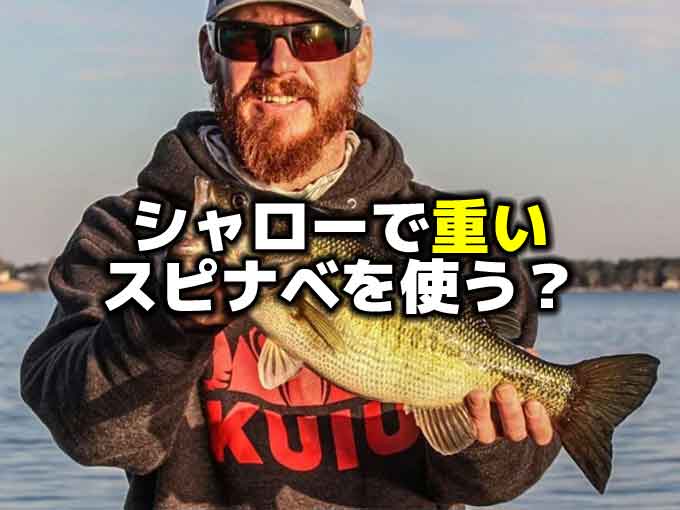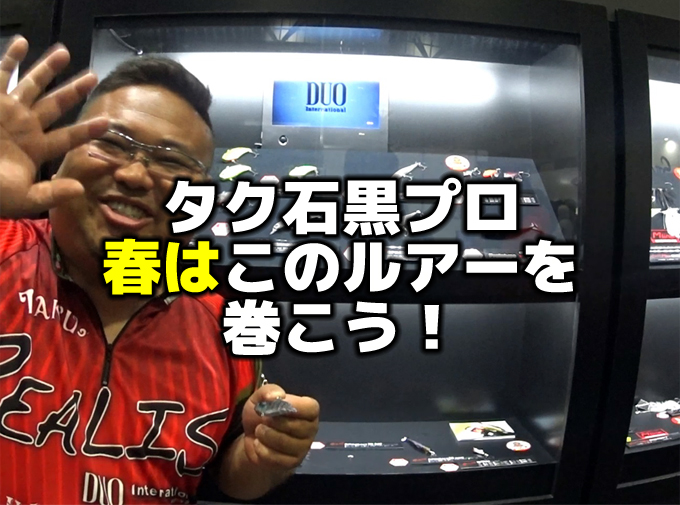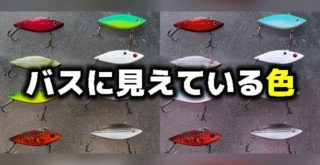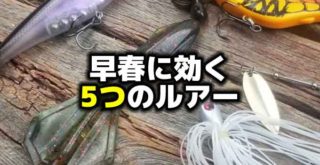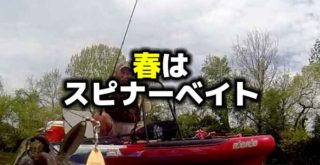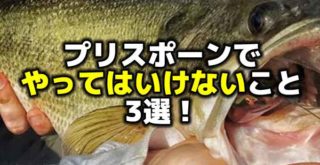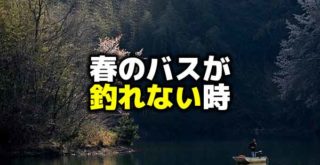ベジテーションでバスを釣るコツ10選 草むらの奥にひそむ大物をゲット

Photo by scout.com
こんにちは!店長の小山です!
本日は海外サイトより、”10 Things to Know to Catch Bass in Vegetation”という記事を引用してご紹介いたします!
引用先:scout.com”10 Things to Know to Catch Bass in Vegetation”by DAVID A. BROWN 03/31/2016(海外サイトです)
皆さんの釣り場、フィールドにはベジテーションエリアはありますでしょうか?
バス釣りにおけるベジテーションは数多くありますよね、アシやガマ系、ウィード系、リリーパッド系、浮草系、水面に垂れ下がる陸生植物系、増水による一時的な冠水植物系などなど。
バス釣りにおいて攻めるべきカバーにはいくつかのタイプがあって、水門や橋脚のようなマンメイドストラクチャーやカバーのタイプと、岩や崖などのロック系ストラクチャーやカバー、そしてこういった草木などのベジテーションカバータイプなどこれも様々です。
いずれもバス釣りにおいては大切な釣れる要素なのですが、ことベジテーションにおいては生き物ですから、その時々や環境によって特徴が大きく変わるんですよね。そのため、マンメイドストラクチャーなどのハードカバーに比べてベジテーションの釣りが好きではないという方は結構いらっしゃるようですね。
この記事では、注目すべきベジテーションの種類やその特徴、効果的なルアーやアプローチについて書かれています。
苦手な方も好きな方も、読んで覚えておきましょう。
3つのベジテーションタイプを探す
For tips on shallow, weedy waters from Florida to the California Delta, we asked Bassmaster Elite Series pro Ish Monroe for his top targets.
フロリダからカリフォルニアデルタまでの浅くウィードの多い水域でのヒントを、バスマスター・エリートシリーズプロのイッシュ・モンローに聞きました。
1.ホテイアオイ
Hyacinth: Growing in thick, emergent rafts, this free-floating weed has no anchors. Therefore, it’s immediately predictable based on prevailing winds. Easterly blow, you know the hyacinth mats will be pushed into those west side pockets, canals, or land ends. So just adjust for any wind direction.
Also with minimal subsurface structure, hyacinth mats promise a wide-open shadow realm below the canopy.
“This is some of the best big-fish cover because it creates a blanket over their heads and a clean bottom,” Monroe said. “When you have that, the fish can see your bait as far as that bottom is clean. With one flip of their tail, they can be 6 feet to the left, right, in front or behind them to eat that bait.
“Obviously, fisheries management doesn’t like hyacinth because it’s an invasive species, but it’s an excellent bass habitat!”
ホテイアオイ:密集して生育し、大量に水面に現れる、この自由に浮かぶ草にはアンカー(茎や根)がありません。したがって、吹きつける風に基づいてすぐに予測可能です。東風では、ホテイアオイのマットが西側のポケットや運河、陸地の端に押し込まれることがわかります。風向きによってアジャストしてください。
また、最小限のサブサーフェスストラクチャーとして、ホテイアオイのマットはその屋根の下に広い影の領域を作りだします。
モンロー氏は、「これは頭上に毛布でも掛けたようになり、きれいなボトムを作り出すため、最も優れたビッグフィッシュのカバーだ」と語った。 「もしそれを見つけたら、魚は底がきれいである限りあなたのルアーを見つけることができます。1度のフリッピングで、前後左右に6フィートの範囲でそのルアーを食べに来ます。
「漁業関係者からはホテイアオイは嫌われています。なぜなら、それは外来種だからなのですが、バスの生息地としては優れています」
2.オオカナダモ
Hydrilla: Another invasive hated by lake managers, this rooted weed is nothing short of a bass magnet. Throughout most southern lakes, this is the must-see attraction that seldom disappoints.
“If you don’t know where to start on a lake, find the hydrilla, and that’s going to be the best place to start looking,” Monroe said. “If there’s hydrilla, most likely, there are bass around it.
“When the hydrilla reaches the surface and creates a mat, that’s where the big fish seem to be, but there’s always a concentration of bass around hydrilla. Whether it’s in open water, or it’s mixed in with another type of (weed) like lily pads or Kissimmee grass, hydrilla is always THE key.”
Look for lanes and holes in the hydrilla where opportunistic bass can hunker down and wait for their opportunities to burst forth and gobble a wayward baitfish.
オオカナダモ:湖の管理者から嫌われているもう一つの外来種、根付いたこのウィードこそバスを引きつけるマグネットに他なりません。ほとんどのアメリカ南部の湖全体で、めったに裏切られることのない必見のアトラクションです。
「湖のどこから始めるべきかわからない場合は、オオカナダモを見つけてください。それはバスを探し始めるのに最適な場所になるでしょう」とモンローは言いました。「オオカナダモがあれば、その周辺にはバスがいます。」
「オオカナダモが水面まで達してマットを作ると、その中にビッグフィッシュがいるように見えますが、オオカナダモの周りには常にバスが集中しています。それがオープンウォーターであろうと、リリーパッドやキシミーグラス(細いアシのような草)のような別のタイプのベジテーションやウィードと混ざってても、オオカナダモは常に手掛かりとなります」
オオカナダモの通路や穴を探して、待ち伏せ型のバスが立ち寄り、気まぐれなベイトフィッシュがうろついてきたときにむさぼり食うことを待ちます。
(ハイドリラは正確には日本やアフリカ原産のクロモなのですが(そのためアメリカでは外来種として嫌われている)、ここでは日本から見ても馴染みのあるオオカナダモと訳させていただきました。日本から見るとオオカナダモが外来種になるので本文的にもしっくりきます。バスとの関係も近いと判断しましたので問題ないと考えました。間違いがありましたらすみません)
3.リリーパッド
Lily Pads: From lily pads to spatterdock, this long-stemmed plant with the solar panel tops is easily spotted from a distance. Occurring in vast fields, or scattered amid various stalky grasses, pads offer bass multiple benefits.
“Fresh, green pads are a great place for fish in the prespawn, spawn and post spawn,” Monroe said. “They’ll use the bases of the stems as a hard spot to spawn on, they’ll uses the pads for shelter and ambush.”
リリーパッド:リリーパッドからスパードック(スイレンの仲間)まで、太陽光パネルを上部に持つこの長い茎の植物は、遠くからでも簡単に見つけられます。広大な領域で発生したり、細長い茎が真ん中にあったりと、パッドにはバスにとって複数の利点があります。
「新鮮な緑色のパッドは、プリスポーンからスポーン、ポストスポーンの魚にとって素晴らしい場所である」とモンローは語った。 「茎の根元をハードボトムと見立てて産卵し、避難所としてや待ち伏せのためにパッドを使用するのです」

ベジテーションを釣るときの特徴
In addition to specific types of vegetation, learn to identify the occasional sweet spots.
特定のタイプのベジテーションに加えて、その他のスイートスポットを特定する方法を学びます。
4.混合ウィードマット
Mixed mats — Florida pro J.T. Kenney points out that hydrilla beds often end up hosting a hodgepodge of various aquatic weeds, including random hyacinth rafts. Finding a bunch of hyacinth wedged into a hydrilla mat means an isolated cavern amid the hydrilla jungle — just the kind of spot the mat monsters like to claim.
混合マット:フロリダ州のプロJ.T. Kenneyは、オオカナダモのマットはしばしば、ホテイアオイなどを含む様々なウィードの集まりになってしてしまうことを指摘しています。オオカナダモのマットに閉じ込められたホテイアオイの群生を見つけることは、オオカナダモのジャングルの中に隔離された洞窟を意味します。マットのモンスターが巣食うようなスポットです。(ホテイアオイにより日光が遮断されるためボトムにオオカナダモが生えないスポットになる)
5.死んだウィードなどの集まり
Dead and alive — Dead grass, reeds or tules blown into a pocket within prominent shoreline vegetation offers specific shade spots where fish can sit along the edges of cover, as opposed to tucking far back in the shadows. This offers better feeding opportunities.
死んでるところに生きている – 死んだ草や、アシやウィードがショアラインのポケットに飛ばされてたまっているような場所は、影の中深くに入り込んでしまうのとは対照的に、魚がカバーのエッジ沿いのシェードに居座るスポットになる。これはより良いフィーディングの機会となります。
6.仕切るもの
Logs, stumps or laydowns punctuating a stand of pads or a hydrilla bed. Any additional structure is worth a few casts.
丸太、スタンプ(切り株)やレイダウンは、リリーパッドやカナダモベッドの区切りになります。こういった追加のストラクチャーは、数キャストする価値があります。
7.岬や角
Points and edges — feeding fish will leverage anything that corrals or guides baitfish into ambush angles.
岬と角 -フィーディングフィッシュは、ベイトフィッシュを囲うか誘導することができる角度のあるものを利用して待ち伏せします。
ベジテーションで釣るための戦略
Judge each situation based on its specifics, but here’s a handful of tactics that’ll give you a solid game plan for tempting bass around shallow vegetation.
その状況に基づいての判断にはなりますが、ここにはシャローのベジテーションの周りのバスを誘惑するための強固なゲームプランを提供するいくつかの戦術があります。
8.パンチング
Worms, lizards and creature baits all produce bass in various scenarios. Monroe suggests choosing your plastics and rigging based on cover density.
For example, in lily pads and hydrilla, he’ll pitch a Texas-rigged Missile Baits Tomahawk worm with just enough weight to penetrate the cover. For those densely matted grass or those thick hyacinth rafts, he’ll break out the Missile Baits D-Bomb or the new Craw Father rigged on a River2Sea New Jack hook with a 1 1/2-ounce River2Sea Trash Bomb tungsten weight.
Fellow Elite Series pro Fletcher Shryock leverages a particular presentation to mimic natural forage behavior. After punching a Yamamoto Psychodad through a mat, Shryock will let the bait hit the bottom, but then he’ll slowly reel it up to the underside of the mat.
By holding the bait snug to the vegetation and slightly wiggling his rod tip, he can simulate a live crawfish clinging to the cover. If the ruse is going to work, it typically happens pretty quickly.
ワーム、リザード、クリーチャーワームはすべて様々な使用法でバスをもたらします。モンローは、カバーの密度に基づいてワームやリグを選択することを提案しています。
例えば、リリーパッドとオオカナダモでは、カバーを貫通するのに十分な重さのテキサスリグにミサイル・ベイツ・トマホーク(Tamahawk)ワームを投げます。密集した草や厚いホテイアオイには、Missile Baits D-BombやNew Craw FatherをRiver2 See New Jackフックにリグり、1と1/2オンスのRiver2Sea Trash Bombタングステンシンカーで打ちます。
フェローエリートシリーズのプロ、フレッカーショーロックは、特定のプレゼンテーションを使って自然のベイトの行動を模倣します。ゲーリーヤマモト・Psychodadでマットを貫通した後、ショーロックはワームをボトムまでフォールさせ、ゆっくりとマットの下まで巻き上げます。
ワームがベジテーションの下で引っかかったところで止め、ロッドティップを少し動かして、カバーにしがみつく生きたザリガニをシミュレートすることができます。そのやり方がうまくいけば、結果はすぐに帰ってきます。

9.スイミング
Rig a slender swimming style bait such as the Yamamoto Swim’N Senko or Zoom Ultra Vibe Speed Worm weightless, Texas Style and buzz it across the tops of looser vegetation. Not the deal for hyacinth rafts, but over hydrilla holes, through a scattered pad field or even along the edge of reeds, this one can get the rod ripped out of your hands.
ゲーリーヤマモトスイムセンコーやズームウルトラバイブスピードワームなどのスリムなスイミングスタイルのワームを、ライトテキサスリグでゆるやかにウィードのトップで這わせる。ホテイアオイ用の戦略ではなく、オオカナダモの穴の上、広く散ったリリーパッド、またはアシのエッジに沿ってやっても、あなたの手からロッドをひったくられる可能性があります。

10.浮かせる
A great post spawn option for those fish looking to recuperate with protein-rich meals that are easily picked out of the vegetation, topwater frogs should always have a place in your shallow vegetation arsenal.
Monroe’s especially fond of fishing frogs through canals or sloughs, as these arteries are typically deeper than the outside waters. Mornings and afternoons are typically his frogging prime times, but Monroe won’t hesitate to throw his Snagproof Ish’s PHAT Frog into shadow pockets during midday hours.
“That also imitates bluegill, birds, and other creatures as well as the actual frogs (in the vegetation),” he said. “That’s the great part about a frog — it imitates so many things.”
ポストスポーン時期に、タンパク質が豊富でベジテーションから簡単に摂ることができる食事で回復しようとしている魚のための優れたオプションです。トップウォーターフロッグは、常にシャローベジテーション用兵器として持つべきです。
モンローは特に、水路や湿地を通すフロッグの釣りが好きです。これら道になっているところは一般的にほかより深いためです。朝と夕方は典型的なフロッグのプライムタイムですが、モンローは真昼の間にSnagproof IshのPHAT Frogをシャドーポケットに投げることを躊躇しません。
「それはブルーギル、鳥、その他の生き物だけでなく、実際のカエル(ベジテーション内にいるもの)も模倣する」と彼は語った。 「フロッグの素晴らしいことのひとつは、たくさんのものを模倣できることです」

いかがでしたか。
生物学的な要素のある話なので、本来は厳密に種としての区別をつけなければいけないのかもしれませんが、ここではパターンとしての話にとどめますので、だいたいの感覚を察知していただければと思います。
ホテイアオイと言われてもよくわかりませんが、「普通に草だと思ってキャストしたら浮いてる植物で巻いたらこっち来ちゃったみたいな草」、でも構わないと思います(笑)。こんな感じで。
「こんな内容なら全部知ってるよ」という方もいらっしゃるとは思いますが、初めて知ったことがひとつでもあれば、
いつも行ってるフィールドのことを思い出してみて、なんだかまた新しい攻め方が浮かんできませんか?
初めて行くフィールドにこんなベジテーションがあったらこういう風に攻めようかなと思いませんでしたか?
新しいことを知るたびにいつもの釣り場も新しい目で見ることができる、こういうのも釣りの良さですよね。
ベジテーション嫌いな方も思い切ってブチ込んでみてくださいね♪
それでは、また。
毎度ありがとうございます!







